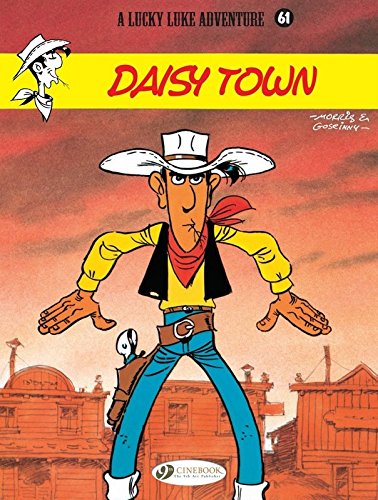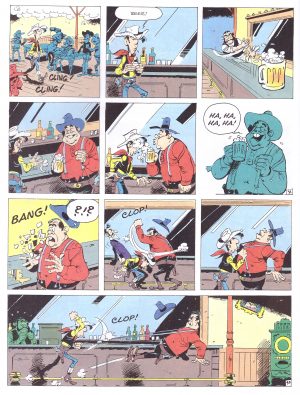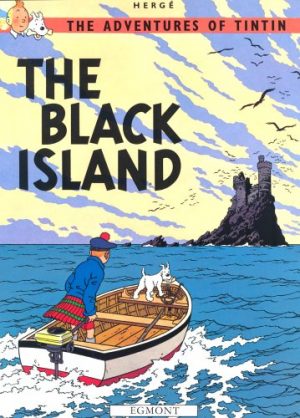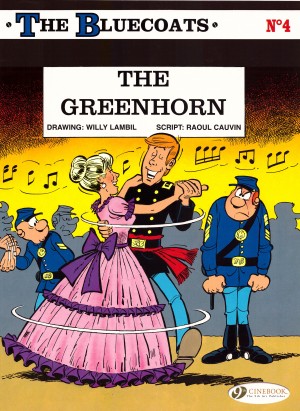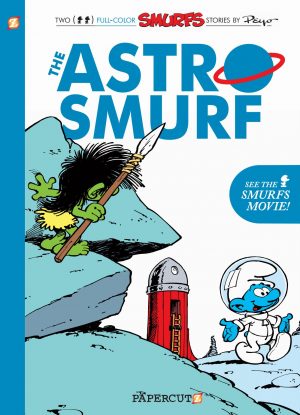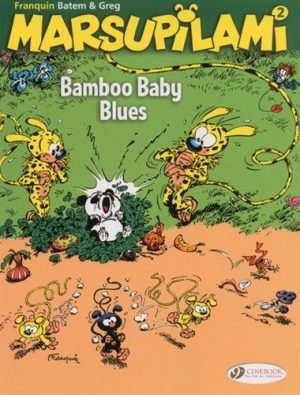Review by Karl Verhoven
Although bearing the credits of the classic Lucky Luke creative team, Daisy Town was produced as a film in 1971, and the graphic novel version was adapted by Morris in 1983, several years after René Goscinny’s untimely death.
It’s a neither fish nor fowl story. Daisy Town was the first Lucky Luke animation, and Goscinny created it via mining the Lucky Luke back catalogue for good jokes and incorporating them into a somewhat generic script of Luke protecting a town beset by the Daltons. It was necessary to introduce the characters, as some cinema viewers might not be familiar with them, so for film purposes Luke and the Daltons have never previously met, although they otherwise remain true to their established characters. The smallest Dalton, Joe, is still the meanest and hot tempered, while the largest, Averell is still a sap.
What Daisy Town displays very well is the difference between graphic novels and animation. The staged jokes from the film are well worked out, but tailored toward fast-moving visuals, whereas transferring those jokes to illustrated pages sucks the life from some of them. An early example is Luke’s first confrontation with the Daltons, involving a saloon bar piano. It takes two pages to convey, even with Morris a master of compact storytelling. The pacing also effects the innovative climax, toying with Western genre conventions, but dependent on continual movement so much better served by animation.
Far more so than other Lucky Luke books, the colouring is a mixed blessing. The undertaker’s face continually having a green pallor is a visual joke, but other characters also have green faces, and there’s way too much white in both foreground and background during a scene of wagons in the desert. Far more effective is the red, orange and yellow graded sunset for a few silhouette panels toward the end. There’s also a scene used as the otherwise fine sample art where Morris forgets to draw Luke’s gun in his holster for a panel. More deliberate is Cinebook’s decision to run with the cover of Luke’s cigarette replaced by a stalk of grass, although he still smokes inside, but the replacement also removes a joke with the cigarette smoke, instead raising thoughts of why Luke’s standing like that with only the single gun.
The concentration on visual humour almost phases out verbal quips, but a few make it, including a cavalry officer’s declaration about a last minute rescue that “I happen to respect tradition. The cavalry always arrives in the nick of time”, with a good follow-up about them running late for the next battle. If anyone picked up Daisy Town as their first Lucky Luke book they’d discover some good jokes, and some wonderful cartooning, and while possibly noting the pacing was a little awry, they’d be content with it. Goscinny and Morris, however, have produced far better.
In 1991 Daisy Town returned to cinema screens as a live action movie starring Terrence Hill. The entire film can be seen on You Tube in German, but the original animation is available in English.
